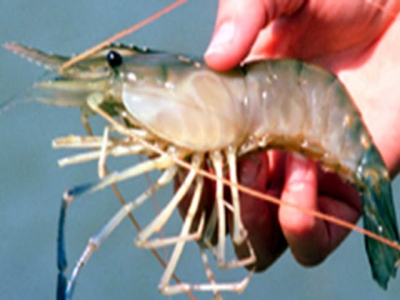Shrimp diseases - Fungal diseases

Several fungi are known to cause diseases in shrimps and may cause mortality ranges from 20 to 100 per cent. However three among them are more dangerous to the larval stages and another to the juvenile stage. The common disease causing fungi are Lagenidium, Siropodium, Haliphthoros and Fusarium. Environmental factors such as rainy season, humid condition, low salinity etc. are found to be increasing the fungal growth.
In the case of larval infection it starts with egg stage. The fungus attaches itself to the egg and at hatching it gets stuck on the hatchling and as the shrimp grows up it ramifies through the body wall of the larva until the entire body of the larva becomes a bundle of mycelia of the fungus.
Shrimp are mostly affected by the Lagenidium and Fusarium sp. By filtering the water thoroughly, treating the water chemically or irradiation the fungus infection can be prevented. Growth of fungus Fusarium is identified by the presence of canoe-shaped macroconidia and also due to the presence of cotton wool like growth.
Related news
 Use algorithms to calculate feed for Pacific white shrimp
Use algorithms to calculate feed for Pacific white shrimp Shrimp aquaculture has a great impact on Ecuador’s national economy. As of July 2018, cumulative shrimp harvests had reached 289,431 metric tons (MT) and $1,868
 Understanding shrimp hemocytes Part 1
Understanding shrimp hemocytes Part 1 Shrimp producers seeking to improve the profitability of their crops must be aware of external factors that may affect the survival and growth of their shrimp
 Understanding shrimp hemocytes Part 2
Understanding shrimp hemocytes Part 2 Shrimp producers seeking to improve the profitability of their crops must be aware of external factors that may affect the survival and growth of their shrimp